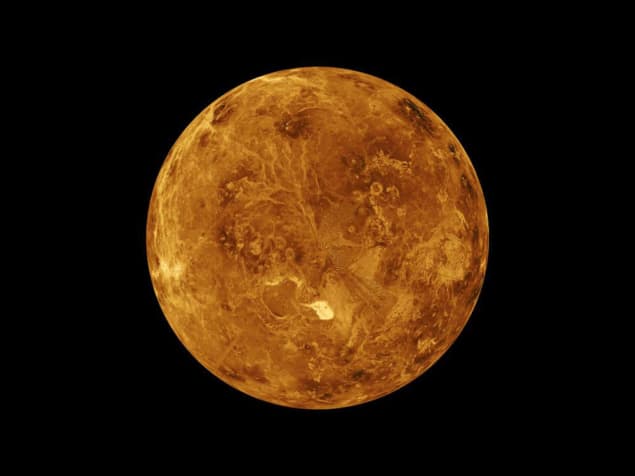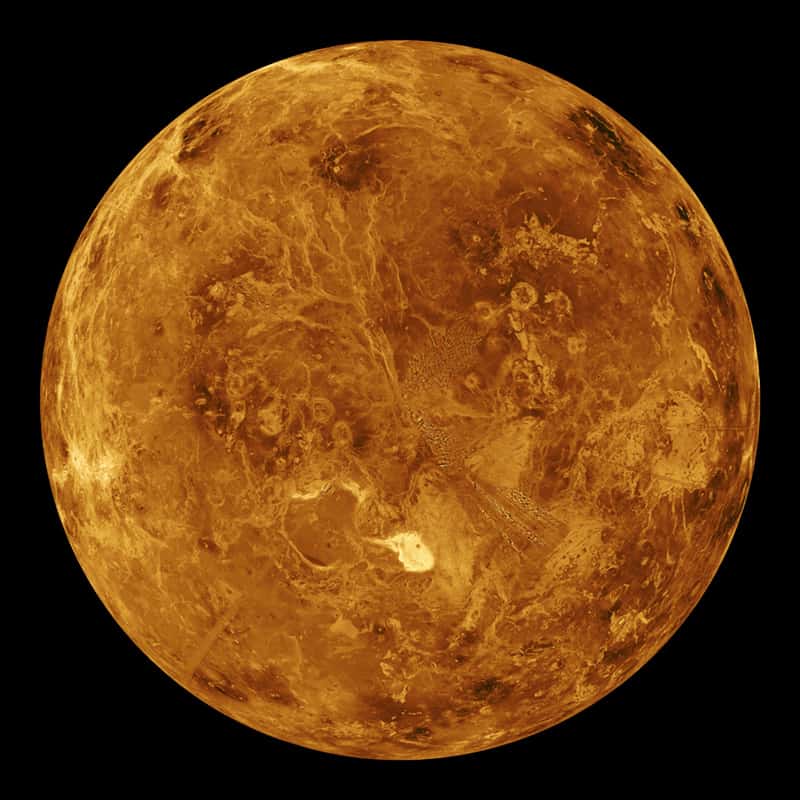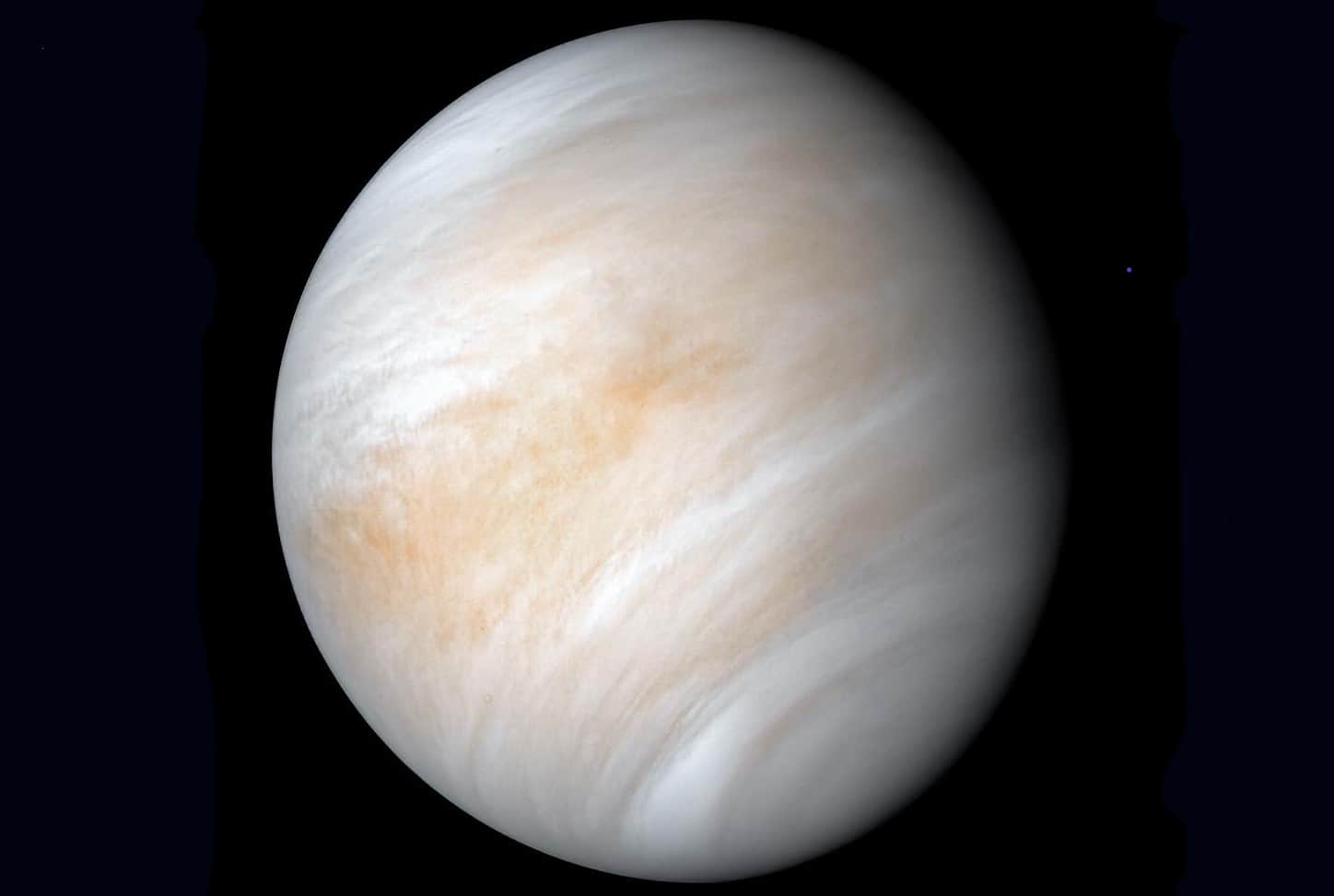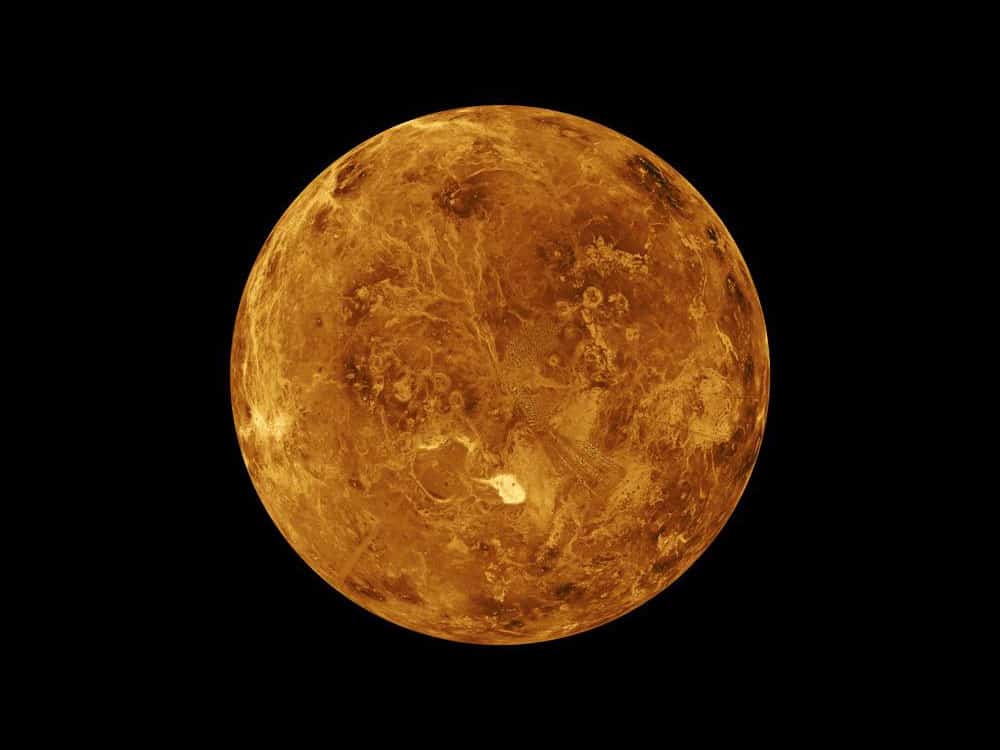Disagreements remain over spectral data, but the debate now considers pathways for life to survive the extreme conditions on Venus
 2020 Fall Meeting of the American Geophysical Union (AGU).
2020 Fall Meeting of the American Geophysical Union (AGU).
The story began in September when a team led by Janes Greaves of Cardiff University, UK, announced it had observed phosphine’s spectral fingerprint in the clouds of Venus. Greaves’ group saw the signal in data from the James Clerk Maxwell Telescope (JCMT) in Hawaii and the Atacama Large Millimeter/submillimeter Array (ALMA) in Chile.
We know that on terrestrial planets such as Venus and Earth, the only known processes to generate phosphine are connected with metabolism by anaerobic microbial life. So does that mean there’s life on Venus? Not necessarily. In the original Nature Astronomy paper, Greaves’ team made it clear the phosphine could originate from unknown photochemistry or other processes.
But the implications still triggered strong reactions in the astronomy community.

Controversy erupts among astronomers over whether phosphine really was discovered on Venus
First, the organizing committee of the International Astronomical Union (IAU) Commission F3 on Astrobiology criticized Greaves’ team for stoking the media hype – a statement that was swiftly retracted by the IAU executive. Then, a group led by Geronimo Villanueva of NASA’s Goddard Space Flight Center argued that the spectral signal is generated by sulphur dioxide in Venus’ atmosphere – though their suggestion that Greaves’ reprint should be retracted was also withdrawn.
‘Fake lines’?
Other researchers – including a group led by Ignas Snellen of Leiden University – also questioned the way Greaves and colleagues calibrated their data. The original study had identified an absorption line at 1.1 mm, associated with phosphine absorbing radiation from warmer clouds deeper in Venus’ atmosphere. But that line appears against a complex background of thermal emission and Snellen’s group said the way it was removed (fitting the data with a 12th-order polynomial) may have introduced artefacts.
It was against this backdrop of uncertainty that Greaves and Villanueva joined others at AGU Fall on 11 December. Session co-chair Sushil Atreya from the University of Michigan opened by reminding everyone that “we should treat our colleagues with respect” and, in the thankfully courteous discussion that followed, Greaves highlighted a new paper her group had released on 10 December, addressing questions about the spectral baselines.
We’re not looking at confirmation bias here, we’re looking at solid results
Janes Greaves
It concludes there is a probability of less than 1% that “fake lines” (their words) had appeared in the original analysis. “We’re not looking at confirmation bias here, we’re looking at solid results,” said Greaves, who pointed out that much of the analyses were done by people unconnected with the science project.
Villanueva, however, stood by his view that the signal can be explained by silicon dioxide. In his preprint Villanueva had argued that the part of Venus’ atmosphere in question could feasibly contain up to 100 ppbv. At AGU Fall, he said that if even half of that silicon dioxide abundance would place an upper limit on the phosphine detection of 3 sigma – not high enough to rule out chance.
Researchers have also been looking back at data from NASA’s 1978 Pioneer Venus mission. Rakesh Mogul from California State Polytechnic University-Pomona has analysed mass spectrometry data collected by a mission probe dropped through the Venusian atmosphere. Mogul said he has so far found no conclusive signal for phosphine but he has found lots of other “gems in the data” with implications for habitability. That includes all the compounds in the nitrogen cycle and chemicals associated with anoxygenic photosynthesis.
Life at the top
In a separate AGU session, researchers considered the feasibility of life existing in Venus’ clouds.
David Smith from NASA’s Ames Research Center spoke about recent aerobiology on Earth. He said that micro-organisms have been discovered up to altitudes of 12 000 m using scientific aircraft and balloons. “We humans really are bottom dwellers underneath an ocean of atmosphere above out heads and we really don’t know where Earth’s biosphere boundary stops at extreme altitudes,” he said.
Smith did point out, however, that all life in Earth’s atmosphere has been swept up from the surface and eventually returns to the surface under gravity. Moreover, as you move up through the stratosphere, the only things that can survive desiccation and high radiation doses are inactive single-celled micro-organisms, such as endospores with tough coatings.
Conditions on Venus are another level of extreme. The planet’s dense atmosphere is almost entirely made of carbon dioxide, laced with clouds of sulphuric acid. While Venus’ surface swelters at an average temperature of 460 °C, and is crushed under an atmospheric pressure of 93 bar. The mechanism by which life could persist in the clouds conditions is far from clear.
Surviving in a liquid droplet
One possibility was outlined by astrophysicist Sara Seagar from Massachusetts Institute of Technology. She described a hypothetical lifecycle where metabolically active microbes survive in liquid droplets in the Venusian atmosphere. When they eventually succumb to gravity, the desiccated spores drop into a haze layer below before returning to the droplet zone thanks to vertical mixing induced by gravity waves.
A broader, philosophical, view of Venus’ habitability was offered by Noam Izenberg, a planetary scientist at John Hopkins University. He has co-developed a “Venus life equation” – loosely based on the famous Drake equation – which considers three key factors: how life might have originated on Venus; whether it was robust enough to survive; and whether there could have been continuity to the present day.

Could there really be life in the clouds of Venus?
Indeed, recent studies conclude that water oceans may have existed on Venus for significant parts of its early history. Izenberg says it is not inconceivable that life on Venus was seeded from Earth following a large impact. “Something that might have been an extinction-level event on Earth, might also have been a seeding event for other places in the solar system,” he said.
Perhaps even at the interplanetary scale ‘life, uh, finds a way’.
